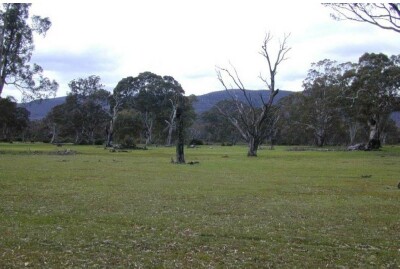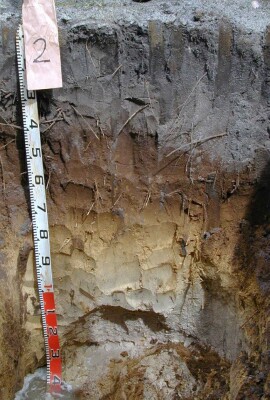CHA99 (Plot 2)
| Site: CHA99 (Plot 2) | Land Unit: Grampians Alluvial |
 |
General Land Unit Description:
This site is near the base of the Grampians, and it appears that water drains onto the alluvial plains from the Grampians. Apparently groundwater closer to the Grampians (about 1 km to the east) is at a depth of 3 m. Currently there exists a 1.5 year old E. globulus plantation on ex-agricultural land. |
Site Description:
| Geology: Quaternary alluvial | Landform pattern: Plain |
| Position in landscape: Flat | Internal drainage: Poorly drained |
Soil Profile Morphology
| A1 | 0-35 cm | Black (10YR2/1) loamy sand, single grain structure, loose consistence when moist, many medium roots. Clear and smooth transition to: |  |
| Subsoil | |||
| Bh | 35-65 cm | Dark brown (7.5YR3/4), loamy sand, single grain structure, loose consistence when moist, unable to estimate macroporosity, many medium roots. Gradual and smooth transition to: | |
| B2 | 65-90 cm | Yellow (10YR7/6) sand, single grain structure, loose consistence when moist, unable to estimate macroporosity, common fine roots. Gradual and smooth transition to: | |
| C | 90-140 cm | Pinkish white (7.5YR8/2), sand, single grain structure, loose consistence when wet, unable to estimate macroporosity, few very fine roots. | |
| 140-300 cm | Clay layer (not hard) observed at 250-300 cm, sands below this layer, anaerobic conditions (smell of hydrogen sulphide). | ||
Notes: Notes: The PSP takes in an area of poor tree growth and survival. An additional pit in an area of better growth and survival revealed no apparent difference in soil profiles that would lead to the observed differences in tree growth.


